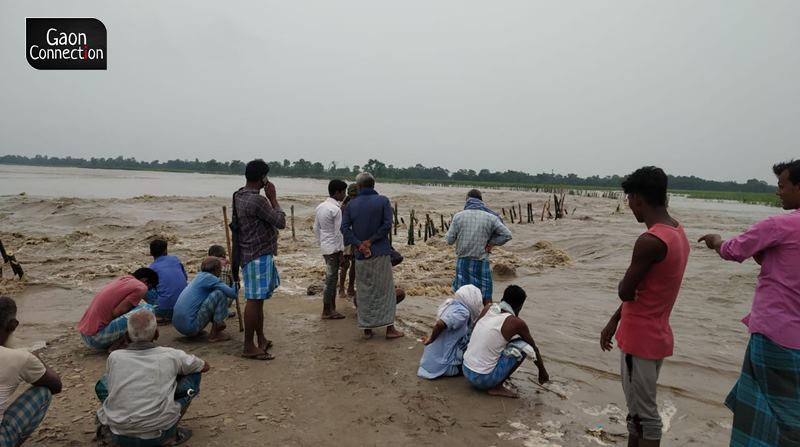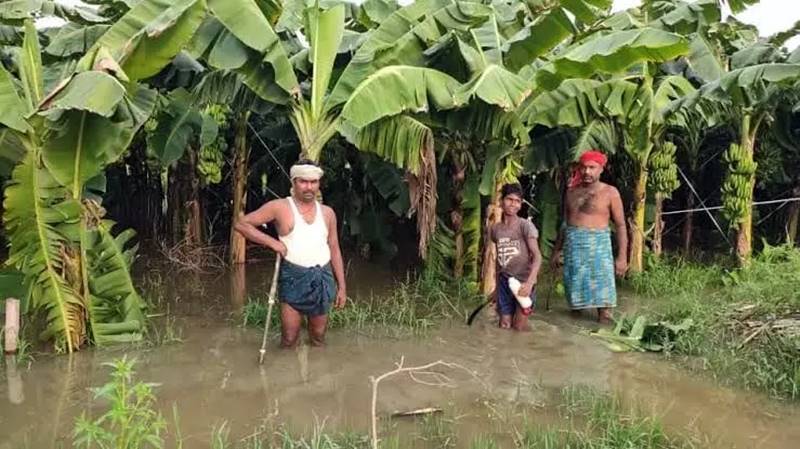Bihar floods: Flood-hit villagers jostled in relief camps in Patna complain of insufficient food and no medicines
Floods, which are an annual affair in Bihar during the monsoon season, are far more pervasive this year as districts in both north and south Bihar regions are affected by the floods. The state government has set up relief camps but people complain there is neither enough food to eat nor access to medicines or lavatories.

The flooding of her house in Patna’s outskirts left no choice for Annapurna Devi but to seek shelter at the flood relief camp set up by the state government near the premises of the Patna University. At the camp, the 45-year-old is jostling for space with another 300-350 flood victims who have been displaced due to a fresh wave of floods in Bihar.
Contrary to her name, which means goddess of food and nourishment, Annapurna Devi is barely getting enough to fill her stomach as boiled rice is all that she has eaten for the last ten days, complained the hapless flood-victim.
“I’m feeling weak and irritable as rice is all I have had in the last ten days. The children in the camp are getting sick but the government has made no provisions for medicines. The living conditions in the camp are unhygienic and cramped,” Annapurna, a resident of Danapur, situated 13 kilometres away from Patna, told Gaon Connection.
“There are no proper washrooms for women as well,” she said in a voice marked by angst and helplessness. Along with her family, Annapurna had come to seek refuge at the camp on August 17 when floods inundated her village. She continues to live in the camp as floodwaters are yet to recede.
Also Read: Impressed by ‘Saran model’, CM Nitish Kumar instructs block-level community kitchens across Bihar

Also Read: Known predominantly for droughts, why are districts in south Bihar facing floods?
Since the beginning of the southwest monsoon season in June, Bihar, which is India’s most flood-prone state, has been facing a series of floods. Limited mostly to the north Bihar region, the floods this year have also affected districts in south Bihar, which is predominantly known for water scarcity and droughts.
As per the latest information of the Central Water Commission, under the Ministry of Jal Shakti, rivers in Bihar continue to flow at severe flood levels with a rising trend. Gandak river in Gopalganj, Kosi river in Khagaria, continue to flow above the danger mark.
As per the official flood data of August 20, at least 2,570 villages in 15 districts of the state are facing floods that have affected a population of 3.74 million. The state government has set up 75 flood relief camps and is also running community kitchens to serve cooked food to the affected people. However, the needs of the flood-hit population are way beyond the state machinery is able to respond to.
Surviving on boiled rice, pulses
Twenty-seven-year-old Asha, a mother of three children, is also living in the flood relief camp where Annapurna Devi is spending her time. According to Asha, the first meal of the day was served at around 1 pm, which consisted of boiled rice and some daal (pulses).
“My children have been running a fever for the past few days but there’s no nutritious food around to feed them; even medicines are a luxury here,” said the young mother. “It feels terrible to eat food while my children are unwell and suffering. Even I feel famished as rice is all I have eaten for almost a week now,” she complained.
Whereas Patna district administration claimed that sanitary napkins have been distributed at the relief camps, women in the camps that Gaon Connection spoke with alleged that even the basic washroom facilities were not available let alone the sanitary napkins.
“We consider ourselves lucky if we get two square meals (boiled rice) a day and you’re talking about sanitary napkins,” a woman spoke sarcastically on the condition of anonymity.
When Gaon Connection sought the comments of the Bihar State Disaster Management Authority’s officer on special duty at the relief camp near Patna University, Avinash Kumar said: —
“Bachchon ke liye roti aur beemar vyaktiyon ke liye dawayi ki vyavastha karaane ki koshish hum log kar rahe hain. Aapda k waqt logon ko samasyayen to jhelna hi padta hai. Lekin hum logon ke paas jo sansaadhan hain, usme behtar karne ki koshish kar rahe hain.”
(We are trying to arrange chapatis for kids and medicines for the sick. It is common for people to face hardships during disasters. But we are trying our best to maximise our response with the resources we have)
Also Read: Ground report: Maimed by floods, cattle in flood-hit parts of UP and MP face fodder shortage
Bihar floods an annual blame game
Floods, which have become an annual affair in Bihar during the monsoon season, are far more pervasive this year as almost all the major rivers in the state are in full spate. Floods in the neighbouring states of Uttar Pradesh and Madhya Pradesh have added to the flood woes in Bihar.
Sitting outside the camp and engrossed in reading a book to prepare for a competitive examination, 24-year-old Rohit told Gaon Connection that the mismanagement of the government is hard to fathom.
“Flood is not an uninvited guest here. It comes every year in this season. So when you know that the disaster will strike you, why can’t you simply be prepared for it. People shouldn’t have to suffer like this,” he said.
Banana crops devastated in Hajipur
Apart from displacing hundreds of thousands people, crops have suffered huge losses too. Situated at a distance of 30 kilometres from Patna, the Hajipur city in the neighbouring Vaishali district is known for its banana cultivation. But this year’s floods due to an overflowing Ganga river have affected the plantations.

Dilip Shah, a 52-year-old banana cultivator from Hajipur, has moved in with his son in a single room rented house in Patna to escape the floods.
“The floods have ruined it all and if it continues to rain like this, we will be left with no income this year. Bananas are the only source of livelihood for people like us,” the farmer told Gaon Connection.
Meanwhile, the condition of the Patna district, which is facing fury of the swollen Ganga, is hardly different from the far off districts that are reeling under heavy floods.

In order to save the state capital from being badly hit by the floods, the administration is trying to divert water on a war footing to other areas around the capital.
In the rural areas of Patna district, a total of 43 gram panchayats are hit by the floods and an estimated 274,000 people have been displaced — majority of which have come to seek shelter in the Patna city.

